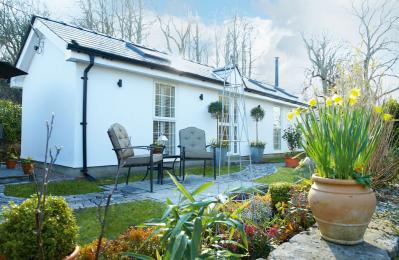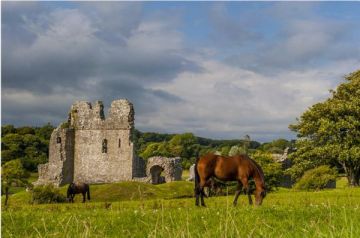
In 1183 the lord of Glamorgan, Earl William of Gloucester, died, and the Welsh rebelled. King Henry II took the opportunity to take Newcastle into crown hands, and married his son John to Earl William's daughter Isabella. John became lord of Glamorgan when Henry died, though he allowed the Welsh leader Morgan ap Caradog to occupy Newcastle for several years.
In 1217 the castle was granted to the Turberville family of Coety. The Turbervilles occupied the castle for many years, but sometime after the Glyndwr rebellion it seems to have fallen out of use.
The castle is roughly circular, about 42 metres by 38 metres, enclosed within a stone curtain wall augmented with mural towers and a later Romanesque gateway. The gateway is especially noteworthy; it is heavily moulded and ornamented, with a recessed inner arch.
The site is protected by a natural slope on the east, and by ditches elsewhere. There is evidence of building foundations within the castle enclosure, but so little remains that it is hard to get a clear picture of what the foundations might represent.
 We've 'tagged' this attraction information to help you find related historic attractions and learn more about major time periods mentioned.
We've 'tagged' this attraction information to help you find related historic attractions and learn more about major time periods mentioned.




